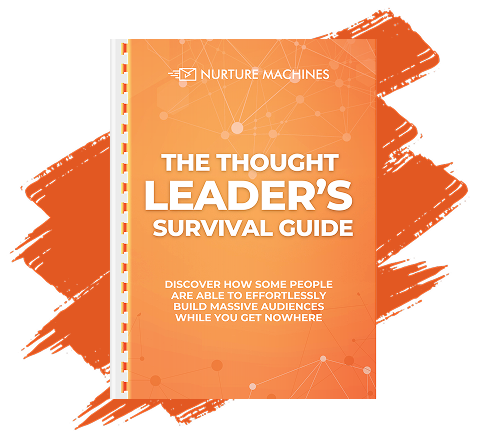Many businesses struggle with lead nurturing, often relying on outdated methods like cold calling. Research shows that integrating chatbots into marketing automation can significantly improve patient communication and engagement. This article will discuss the importance of chatbots in lead nurturing strategies, how they enhance processes, and ways to measure their impact on your efforts. By understanding these aspects, readers will learn to streamline their lead nurturing, ensuring better management and success.
Key Takeaways
- Chatbots provide immediate responses, keeping potential clients engaged throughout their journey
- Personalization through data analysis enhances interactions and builds trust with leads
- Automated follow-ups and relevant content are essential for effective lead nurturing
- Multichannel engagement allows businesses to connect with clients on their preferred platforms
- Continuous learning improves chatbot interactions, ensuring they meet individual user preferences
Importance of Chatbots in Lead Nurturing Strategies

Chatbots play a significant role in lead nurturing strategies by immediately responding to inquiries. This system keeps potential clients engaged and helps build relationships through consistent communication.
Utilizing predictive analytics, chatbots can analyze visitor behavior and personalize interactions. This data analysis allows businesses to refine their strategy, ensuring that leads receive relevant information at the right time.
Furthermore, chatbots collect valuable data that enhances overall customer insights. By integrating these analytics into marketing efforts, companies can optimize their lead nurturing process and improve conversion rates.
Ways Chatbots Enhance Lead Nurturing Processes

Chatbots enhance lead nurturing by creating personalized experiences for prospective clients, ensuring effective strategic management. They automate follow-up communications and nurture leads through targeted content delivery. Chatbots facilitate tailored interactions by segmenting leads, while proactive outreach increases engagement. This approach promotes loyalty and improves understanding through enhanced data collection, making lead nurturing more efficient and effective.
Creating Personalized Experiences for Prospective Clients
Creating personalized experiences for prospective clients is key to successful lead nurturing. Chatbots can engage in meaningful dialogue that addresses specific lead information by leveraging data science and natural language processing. This tailored approach enhances user experience, builds trust, and encourages ongoing interaction. Through techniques similar to virtual reality, chatbots simulate a personalized journey for leads, making them feel valued and understood:
- Utilize data science to gather insights about customer preferences.
- Employ natural language processing to facilitate engaging dialogues.
- Create virtual experiences that resonate with prospective clients.
Automating Follow-Up Communications
Automating follow-up communications is essential for nurturing potential leads effectively. Chatbots can send timely messages and relevant content, such as white papers, catering to customers’ interests. This consistent communication helps keep leads engaged, ultimately contributing to revenue growth as they move closer to becoming paying customers.
| Function | Benefit |
|---|---|
| Timely Follow-Ups | Ensures leads receive consistent interactions, improving engagement. |
| Relevant Content Delivery | Provides leads with materials like white papers that address their interests. |
| Enhanced Communication | Builds trust with potential leads, fostering long-term relationships. |
| Increased Revenue | Guides leads through the sales process, boosting conversion rates. |
Nurturing Leads Through Targeted Content Delivery
Nurturing leads through targeted content delivery is essential for meeting demand effectively. Chatbots can utilize data integration to understand each prospect’s preferences, ensuring that marketing emails contain relevant information tailored to their interests. With the added scalability of automated systems, businesses can easily implement features like drag and drop to design engaging campaigns that keep potential customers informed and interested.
Segmenting Leads for Tailored Interactions
Segmenting leads for tailored interactions is a powerful strategy that chatbots effectively implement. These systems can analyze visitor behavior and preferences using advanced machine-learning techniques. This enables precise information retrieval that aligns with previous online advertising efforts, allowing businesses to adjust their pricing and messaging for each group, ultimately driving higher engagement and conversion rates.
Increasing Engagement With Proactive Outreach
Increasing engagement with proactive outreach is essential for effective lead nurturing. Chatbots can communicate through various channels, like email and mobile apps, to reach potential clients where they are most active. By asking for an email address during initial interactions, chatbots can later send tailored content and updates, enhancing the user experience and driving demand generation across omnichannel platforms.
Integrating Chatbots Into Your CRM for Better Lead Management

Streamlining data transfer between systems enhances customer engagement by ensuring that chatbots communicate efficiently with CRM platforms. Leadership scoring helps improve nurturing efforts, allowing teams to prioritize high-value prospects. Synchronizing chatbot data with sales teams enhances service quality, while analyzing interactions increases customer insights, leading to better automation and more effective lead management.
Streamlining Data Transfer Between Systems
Streamlining data transfer between systems is vital for effective lead management and maximizing every touchpoint in the customer journey. By integrating chatbots with CRM platforms, businesses can ensure that user profiles are updated in real-time, enhancing the quality of interactions across various channels, including social media marketing. This seamless flow of information allows teams to deliver more relevant content to prospects, addressing their specific needs and preferences.
| Benefits of Streamlining Data Transfer | Impact on Lead Management |
|---|---|
| Real-Time Updates | Ensures user profiles reflect the latest interactions, improving decision-making. |
| Enhanced Communication | Facilitates consistent messaging across all touchpoints, increasing engagement. |
| Data Accuracy | Reduces errors by syncing information, enabling personalized marketing efforts. |
| Improved Analytics | Provides insights into customer behavior, allowing for more targeted strategies. |
Utilizing Lead Scoring for Improved Nurturing
Utilizing lead scoring in conjunction with chatbots enhances lead generation and nurturing efforts. Businesses can create a user interface that prioritizes high-value leads by assessing firmographics and engagement data, ensuring that the most promising prospects receive immediate attention. This approach not only improves efficiency but also safeguards data security, allowing teams to focus on building relationships with leads that are more likely to convert:
- Assess firmographics to identify target audience segments.
- Develop a user interface that prioritizes high-scoring leads.
- Ensure data security while managing lead information effectively.
- Enhance lead generation efforts through focused nurturing strategies.
Synchronizing Chatbot Data With Sales Teams
Synchronizing chatbot data with sales teams enhances lead nurturing and customer retention. By integrating chatbot interactions with the sales database, businesses can ensure that vital customer information flows seamlessly between platforms. This real-time data sharing improves customer satisfaction and allows sales teams to engage leads based on their online shopping behavior, tailoring approaches that resonate with each prospect.
- Integrate chatbot interactions with the sales database.
- Ensure seamless data flow between chatbot and sales platforms.
- Improve customer satisfaction through tailored engagement.
- Utilize real-time data to enhance customer retention efforts.
Enhancing Customer Insights Through Chatbot Interactions
Enhancing customer insights through chatbot interactions significantly boosts lead-generation software effectiveness. By analyzing customer behavior during conversations, businesses can identify pain points and preferences, allowing for a more tailored approach to potential leads. Integrating a knowledge base with chatbots ensures that relevant information is easily accessible, improving efficiency in addressing customer queries and nurturing leads more effectively.
Measuring the Impact of Chatbots on Lead Nurturing Efforts

To measure chatbots’ impact on lead nurturing, businesses should focus on key performance indicators (KPIs) that reflect return on investment and workflow efficiency. Analyzing user engagement metrics highlights how chatbots enhance sales lead generation through channels like social media and email marketing. Evaluating lead conversion rates and gathering feedback can optimize chatbot performance, making nurturing efforts more effective.
Key Performance Indicators to Track Success
Businesses should focus on specific key performance indicators (KPIs) to effectively measure chatbots’ impact on lead nurturing. These metrics can include conversion rates at each stage of the sales funnel, response times for customer support inquiries, and the number of leads captured through chatbot interactions. By analyzing these KPIs, companies enhance productivity and refine their strategies to ensure chatbots efficiently serve potential leads and existing customers.
- Conversion rates at each stage of the funnel
- Response times for customer support inquiries
- Number of leads captured through chatbot interactions
- Overall productivity improvements from chatbot integration
Analyzing User Engagement Metrics
Analyzing user engagement metrics is essential for refining a marketing strategy incorporating chatbots. By examining how users interact with chatbots on landing pages, businesses can see where they capture attention and where they might lose potential leads. For instance, insights from user engagement can help identify when to involve live agents for more personalized assistance, ensuring better lead nurturing and improved overall conversion rates.
Evaluating Lead Conversion Rates
Evaluating lead conversion rates is vital for understanding how effectively a brand utilizes chatbots in its lead-nurturing efforts. By examining consumer engagement data, businesses can see how well their virtual assistants provide personalization and relevant incentives that encourage prospects to move forward in the sales process. This analysis helps companies refine their strategies, ensuring interactions resonate with potential clients and ultimately lead to higher conversion rates.
Gathering Feedback to Optimize Chatbot Performance
Gathering feedback is essential for organizations looking to enhance chatbot performance in lead nurturing. By analyzing conversations, businesses can identify areas where the customer experience can be improved, ensuring responses are truly helpful. Incorporating machine learning techniques allows chatbots to adapt based on this feedback, refining interactions in digital marketing efforts to better meet client needs.
Future Directions for Chatbots in Lead Nurturing

Advances in natural language processing will significantly improve how chatbots understand and interact with users. Integrating machine learning can create enhanced user experiences through more personalized conversations. Exploring multichannel nurturing opportunities allows chatbots to engage clients wherever they are. Lastly, the role of chatbots in customer retention strategies will focus on fostering loyalty and encouraging repeat business.
Advances in Natural Language Processing
Advances in natural language processing (NLP) are transforming how chatbots communicate during lead nurturing. With improvements in understanding context and intent, chatbots can provide more relevant answers and engage in meaningful conversations with potential clients. This technology allows chatbots to address specific inquiries quickly, leading to enhanced user experiences and stronger relationships with leads:
| Advancement in NLP | Impact on Chatbots |
|---|---|
| Context Understanding | Chatbots provide specific answers based on user queries, improving engagement. |
| Intent Recognition | Enhanced conversations lead to more personalized interactions with leads. |
| Real-Time Learning | Chatbots adapt to user preferences, making interactions more relevant over time. |
Integrating ML for Enhanced User Interactions
Integrating machine learning (ML) into chatbots enhances user interactions by allowing these systems to learn from previous conversations and adapt to individual preferences. This means chatbots can provide more relevant and personalized responses, leading to better engagement with potential leads. By continuously improving their understanding of customer behavior, chatbots can offer timely assistance and recommendations that align with users’ specific needs:
- Chatbots learn from user interactions to enhance personalization.
- Real-time adjustments based on preferences lead to better responses.
- Continuous learning ensures chatbots remain helpful and relevant.
Exploring Multichannel Nurturing Opportunities
Chatbots have the potential to enhance lead nurturing through multichannel engagement, allowing businesses to connect with potential clients across various platforms. By integrating chatbots into social media, email, and mobile applications, companies can provide consistent and timely interactions that meet leads where they are active. This approach increases visibility and fosters stronger relationships, ensuring potential customers receive personalized information and support throughout their journey.
The Role of Chatbots in Customer Retention Strategies
Chatbots play a vital role in customer retention strategies by maintaining ongoing client communication. They provide timely support and personalized engagement, enhancing customer satisfaction and loyalty. By addressing inquiries promptly and offering relevant updates, chatbots ensure that customers feel valued, reducing the likelihood of churn:
- Provide immediate support to customer inquiries.
- Offer personalized updates based on user preferences.
- Enhance customer satisfaction through timely communication.
Conclusion
Integrating chatbots into lead nurturing strategies significantly enhances engagement and efficiency. These systems automate follow-ups, deliver personalized content, and provide real-time interactions tailored to individual preferences. By syncing with CRM tools, businesses can optimize their outreach and gain valuable insights for improved decision-making. Adopting chatbots for lead nurturing streamlines processes and strengthens connections with potential clients, driving higher conversion rates and fostering long-term relationships.







